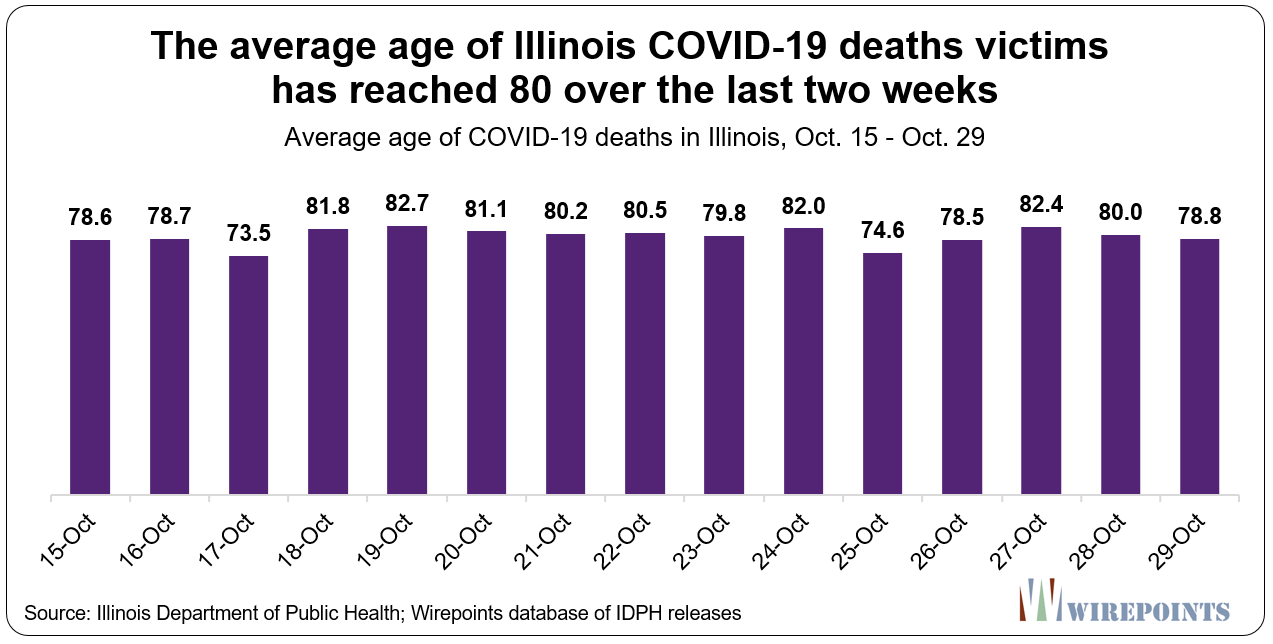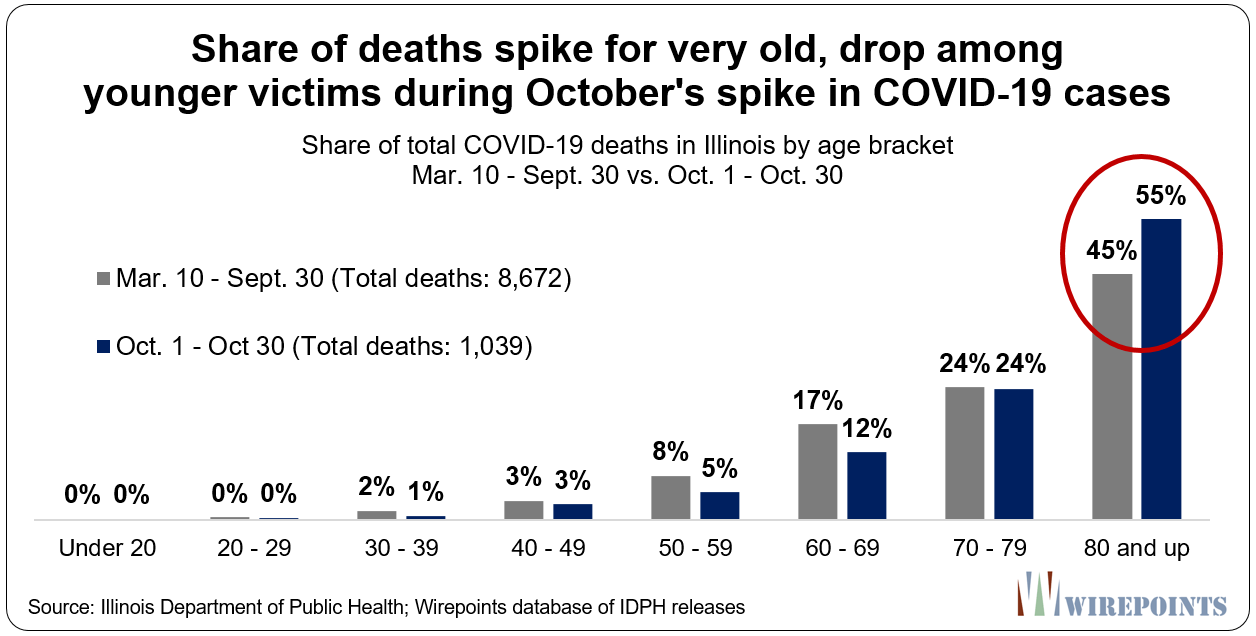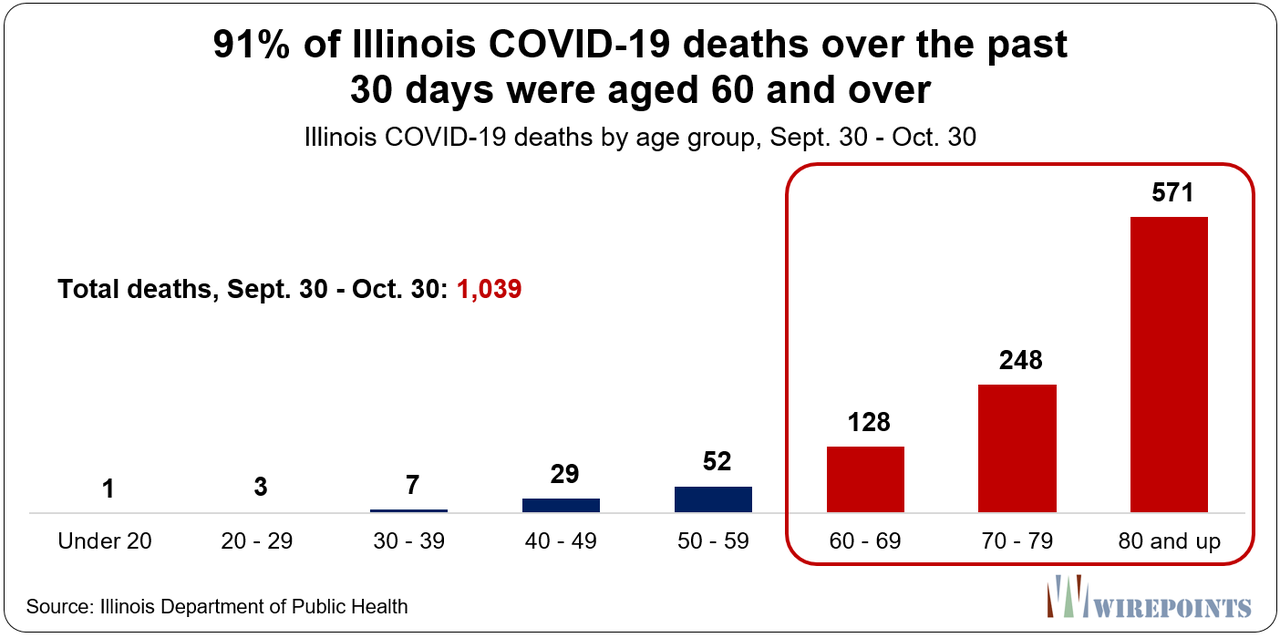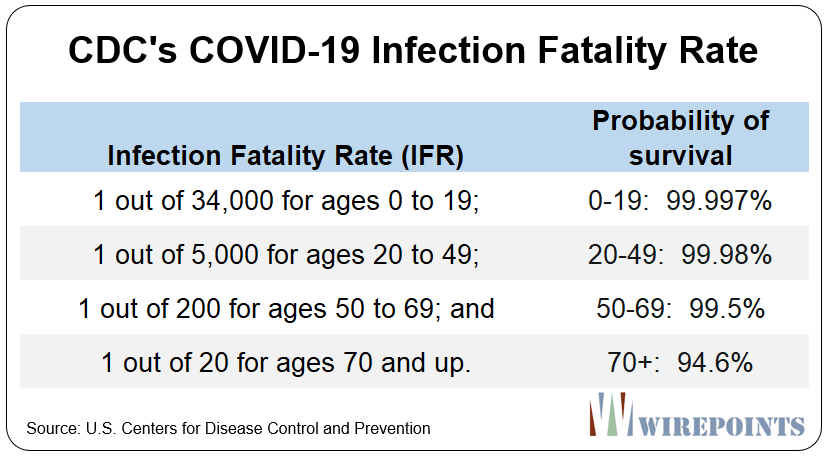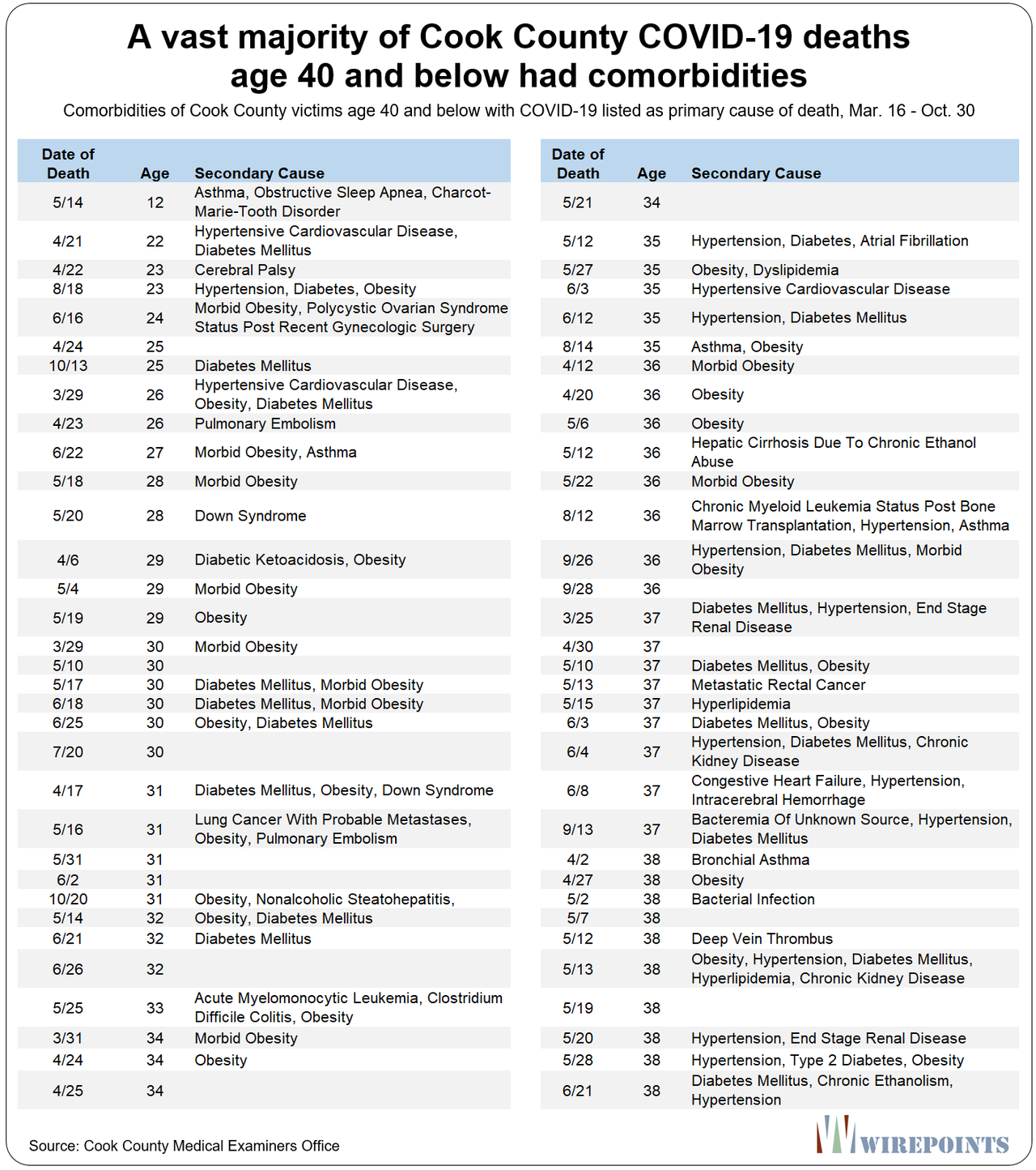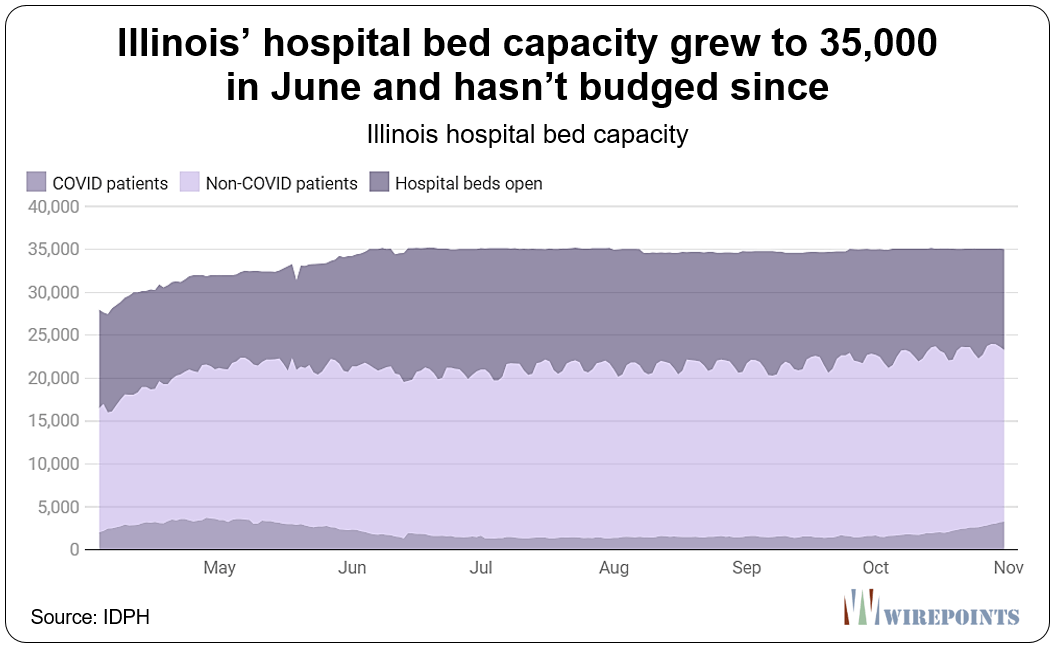Illinois’-Own COVID-19 Data Reveals State’s COVID-19 Policy Is Upside-Down
Tyler Durden
Tue, 11/03/2020 – 18:45
Authored by Ted Dabrowski and John Klingner via Wirepoints.org,
A Wirepoints review of last month’s COVID-19 data reveals just how flawed Illinois’ response to the coronavirus continues to be. The recent spike in cases has the government shutting down large parts of the state again in a brute-force approach, when its efforts should, instead, be hyper-focused on the elderly and opening up the economy for everyone else.
Data from October shows that the elderly continue to dominate Illinois’ COVID deaths, even more than in recent months. Of the 393 increase in Illinois COVID deaths from September to October, nearly two-thirds came from those aged 80 and over. Illinois’ blanket lockdown policies have consistently failed to stem the deaths of the elderly since the pandemic began, especially those in nursing homes.
Meanwhile, those same blanket bans have destroyed jobs, damaged mental health and caused many other problems for Illinoisans who are far less likely to be affected by the coronavirus. The CDC’s latest projections show a survival rate of 99.98% for infected Americans aged 20-50.
With the elderly still inadequately protected and younger Illinoisans suffering harm disproportionate to their COVID risk, it’s clear the state’s approach to taking on the coronavirus is upside down.
Outbreaks and the elderly
To see how the state continues to fail its elderly population, take a quick look at the average age of all COVID deaths in Illinois over the last couple of weeks. The daily average often reached 80 and on some days exceeded 82 years of age.
Overall, the age of Illinois’ COVID deaths for the month of October averaged 80, at least three years higher than the average over the entire pandemic period.
The share of deaths by age group in October also reveals how elderly deaths are becoming more dominant. The 80 and older bracket made up 55% of all deaths in October, compared to just 45% from March through September.
Another cut at that data shows 91% of Illinois’ COVID deaths in October were in the 60-and-older bracket. That’s a major increase from the 86% figure for the period between March and September.
Amazingly, a large number of those elderly deaths are still linked to retirement homes, despite the massive coverage that crisis has received. More than 425 deaths were tied to Long Term Care facilities from Oct. 2 to Oct 30, over 44% of all Illinois COVID deaths in that period.
The fact that the state still hasn’t gotten the outbreaks in Illinois retirement homes under control shows how misguided the return to broad lockdowns is. Instead of focusing time and energy on protecting the specific population that is dying from COVID, Illinois’ efforts are hurting everyone – including those the CDC says have a very low probability of dying.
Younger Illinoisans and risk
The CDC recently released their estimates of COVID’s Infection Fatality Rate (IFR) for the country.
The IFRs show that people between the ages of 20 and 50 have a 99.98% probability of survival if they’re infected. Said in the opposite way, the chance of death after infection for those in that age bracket is at 0.02%. For those under 20, the chance of death from COVID is just 0.003%.
On the other hand, the CDC data also shows that the risk of death jumps to over 5% for those over 70, again making the case that it’s the elderly who are most at risk.
The other demographic the state should focus on are the non-elderly with pre-existing conditions. There are 187 Illinoisans under the age of 40 who have died of COVID since the start of the pandemic. Most of them had one or more pre-existing conditions that include hypertension, diabetes, heart disease and obesity. We don’t know precisely because IDPH refuses to publish the numbers.
However, the Cook County Medical Examiner does provide them for the county. Of the county’s 66 COVID victims under the age of 40 (those which listed COVID as the primary cause of death), 54 had one or more comorbidity.
COVID-19 is a serious risk to a far smaller population than the number of people impacted by the state’s broader lockdowns, which we warned from the beginning would do more harm than good.
That viewpoint is now endorsed by signers of The Great Barrington Declaration, which includes many of the world’s top epidemiologists and infectious disease experts.
The state has spent billions on economic and other relief efforts as a result of the lockdowns, but the more effective plan would be to broadly open up the state and spend what is necessary to protect the elderly and the vulnerable. That means obsessing over safety in retirement homes as well as providing assistance to the elderly living among the general public.
Preventing healthcare facilities from being overwhelmed is also key. The state should ensure hospitals have the resources needed to handle major spikes in cases.
Unfortunately, that hasn’t happened, at least not judging by Illinois’ overall bed capacity (the same can be said for Illinois’ overall ICU bed capacity). Illinois’ hospital bed capacity grew to 35,000 in June and hasn’t budged since.
The science and data behind COVID is telling us it’s time to reopen. Until the data proves otherwise – and we should be vigilant in looking out for any changes in the virus – it’s time to flip the state’s COVID policy on its head.
via ZeroHedge News https://ift.tt/3mSbQeC Tyler Durden
